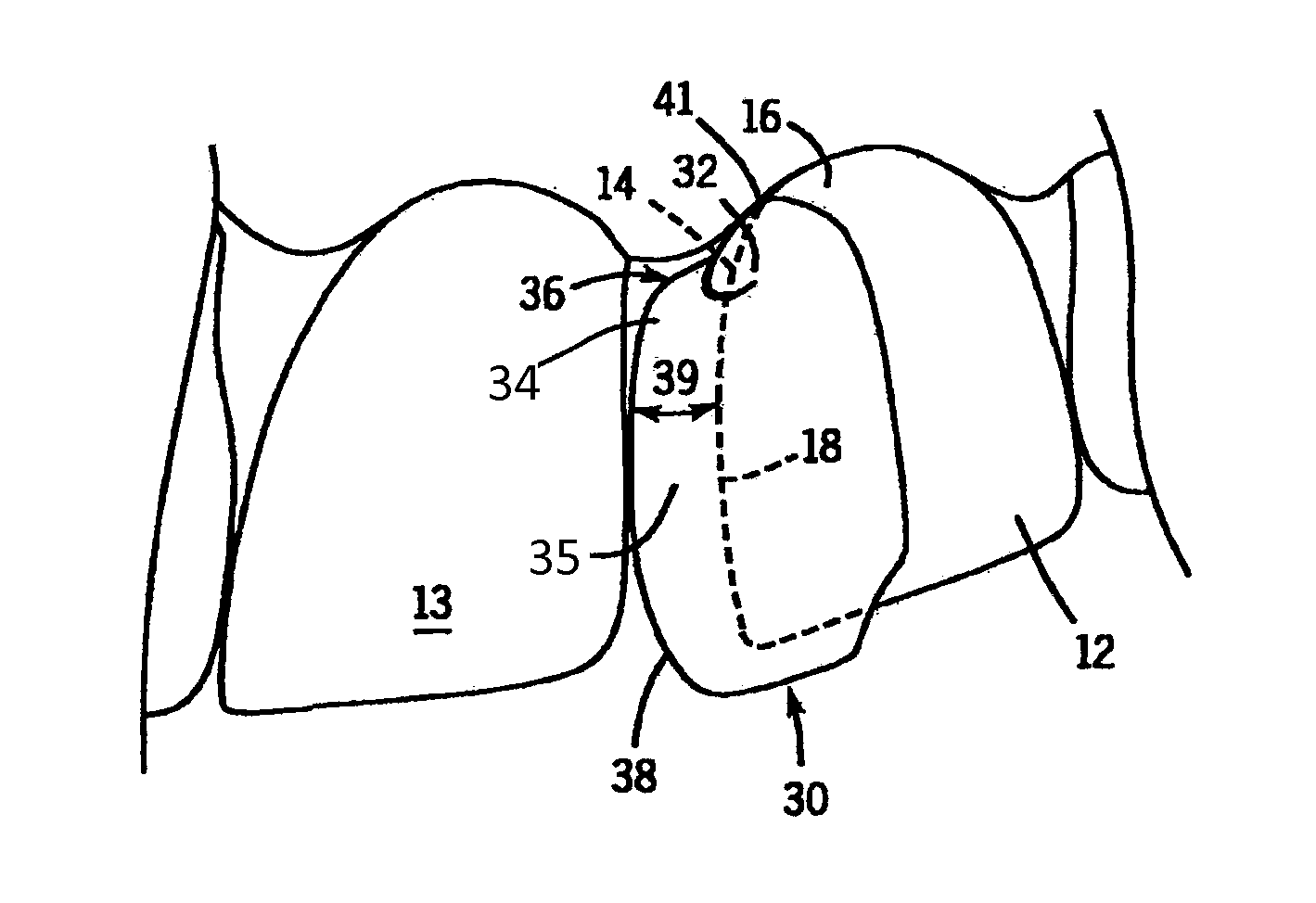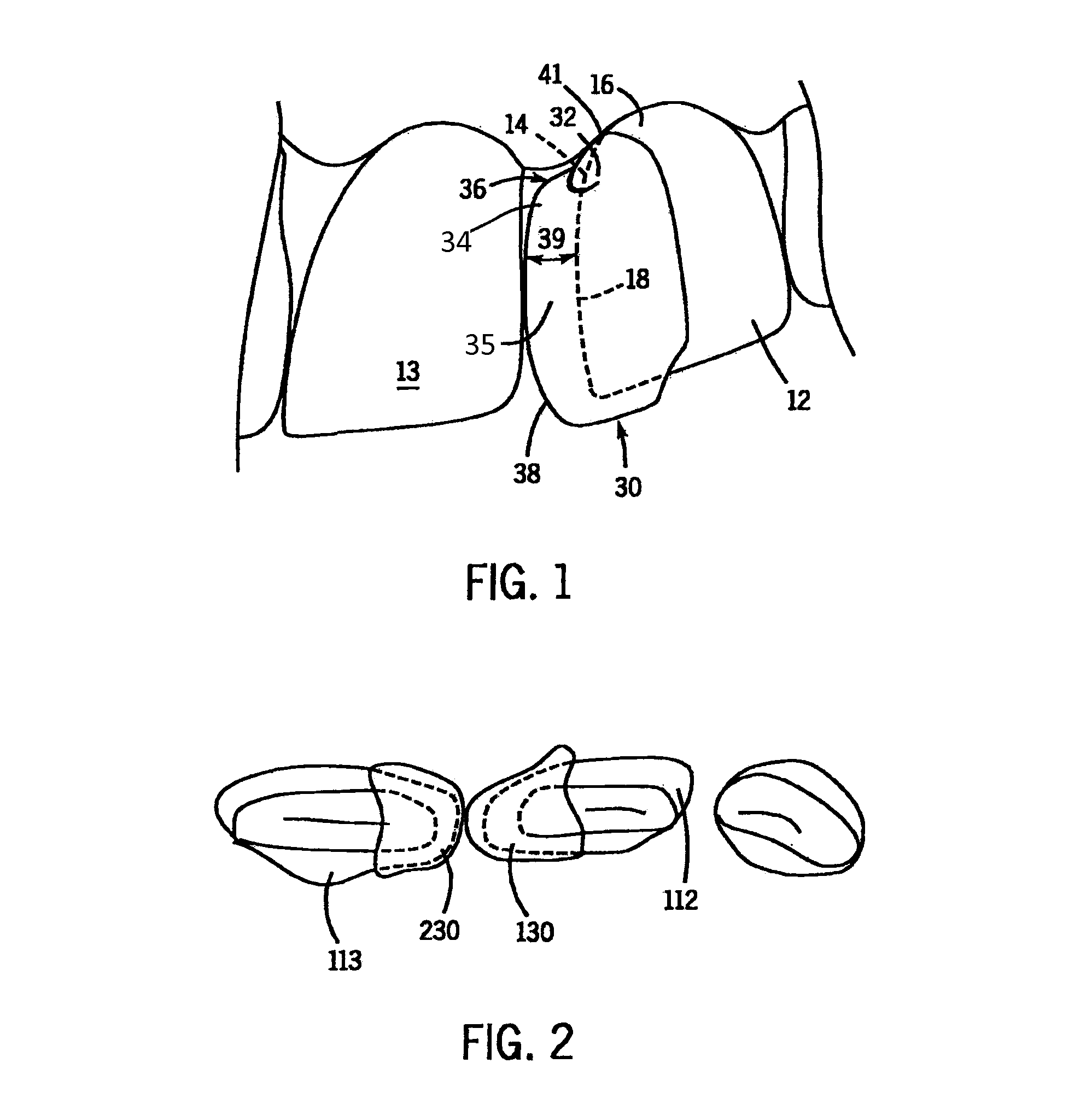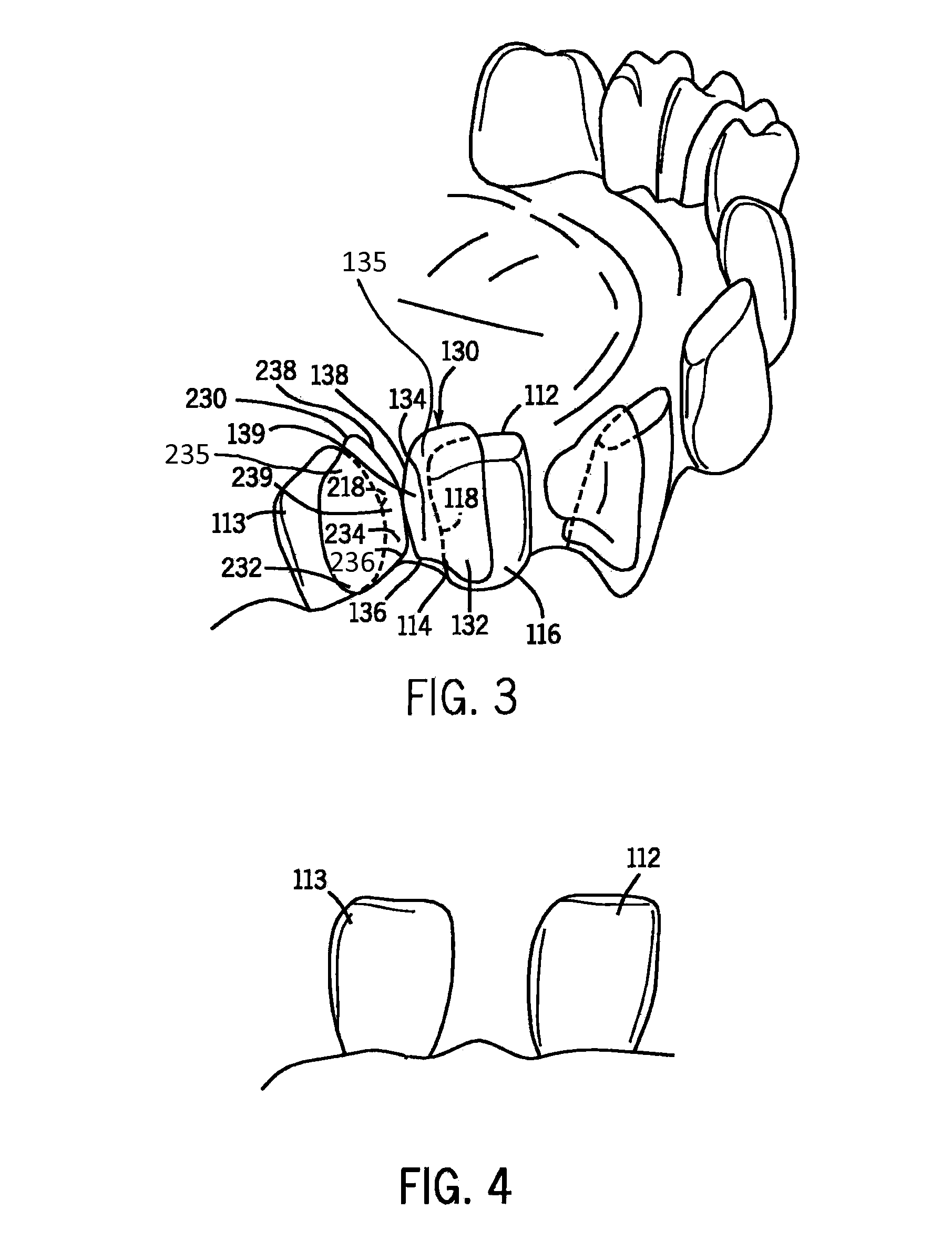Methods and devices for diastema closure
a diastema and diastema technology, applied in the field of diastema closure methods and devices, can solve the problems of all previous techniques, poor soft tissue health environment, and biologically horrific contours
- Summary
- Abstract
- Description
- Claims
- Application Information
AI Technical Summary
Benefits of technology
Problems solved by technology
Method used
Image
Examples
Embodiment Construction
[0049]In one example method according to the invention for closing a diastema, the dentist first locates a diastema needing closure. Optionally, the dentist may remove any portion of either of the teeth adjacent the diastema. This can involve the removal of old composite. Then, the gingiva can be lightly sculpted to create space for a sectional matrix according to the invention. This sculpting can be accomplished with a mini tip and electrosurgery, laser, or sodium bicarbonate spray, which can be used to simultaneously sculpt tissue and clean and detoxify any sickly cementoenamel junction surfaces.
[0050]Turning first to FIG. 1, various dental matrices according to the invention that are suitable for closing a diastema using the method of the invention are shown. In FIG. 1, an upper incisor 12 having a clear sectional dental matrix 30 placed on the incisor 12 is shown. The dental matrix 30 can be formed from a translucent or transparent material such as a polymeric film. One non-limi...
PUM
 Login to View More
Login to View More Abstract
Description
Claims
Application Information
 Login to View More
Login to View More - R&D
- Intellectual Property
- Life Sciences
- Materials
- Tech Scout
- Unparalleled Data Quality
- Higher Quality Content
- 60% Fewer Hallucinations
Browse by: Latest US Patents, China's latest patents, Technical Efficacy Thesaurus, Application Domain, Technology Topic, Popular Technical Reports.
© 2025 PatSnap. All rights reserved.Legal|Privacy policy|Modern Slavery Act Transparency Statement|Sitemap|About US| Contact US: help@patsnap.com



